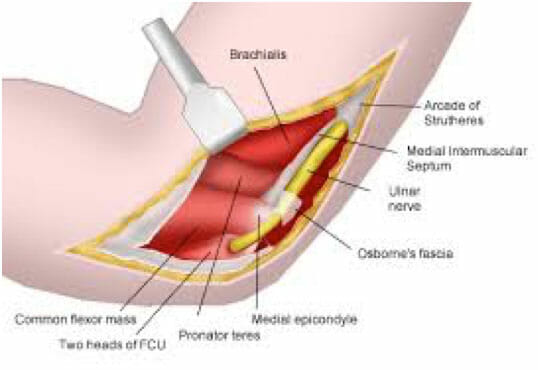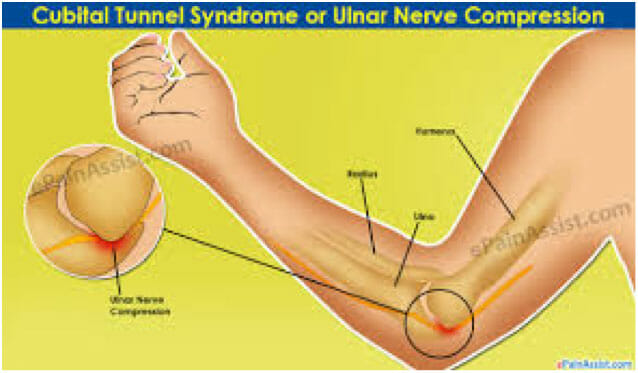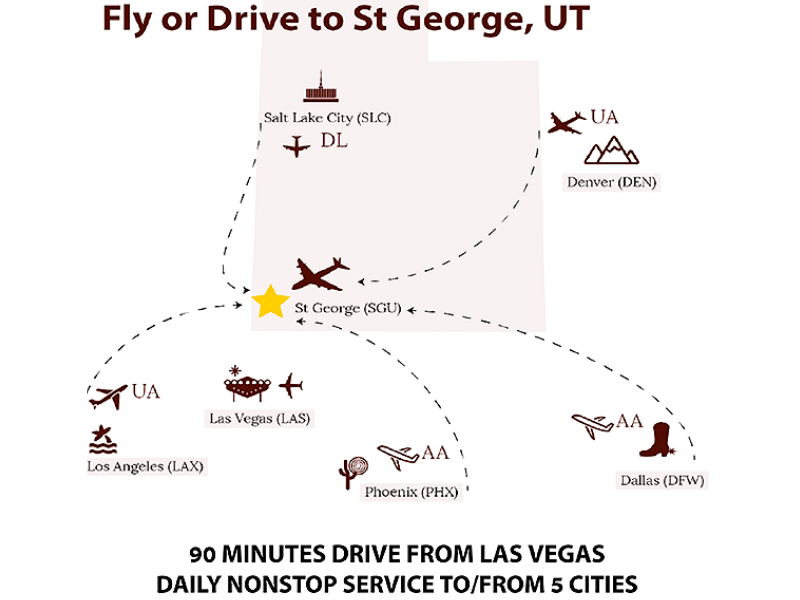Cubital Tunnel Release
Cubital Tunnel Release
Cubital Tunnel Release, also called ulnar nerve entrapment, is a condition caused by compression of the ulnar nerve in an area of the elbow called the Cubital Tunnel. Cubital Tunnel Syndrome is an injury to the ulnar nerve in the arm that can result in moderate to severe pain and numbness in the elbow and ring & little fingers. Untreated, it can result in extreme pain and an unusable hand.
When the ulnar nerve is compressed or entrapped, the nerve can tear and become inflamed, leading to various symptoms.

FAQS
Frequently asked questions about surgical procedures
Can I use my insurance and get these prices?
Payment is due 14 calendar days prior to your surgery date. If, after the cutoff, your account is not settled, your case must be postponed.
How quickly can I have surgery?
How will I meet my surgeon?
If I had a car or work accident, would you work with my employer or attorney for payment?
What if I get sick right before my surgery?
You could develop a respiratory infection, a urinary tract infection, COVID, or some other condition that may necessitate postponement. There is no penalty when this happens.
What’s Included:
- Facility fee
- Graft and hardware costs (if needed)
- Surgeon and assistant surgeon fees
- Anesthesiologist
- Time in the recovery unit (at no additional charge)
- Initial consultation visit
- One post-operative visit
*Please note: If you choose not to proceed with surgery after the initial consultation, or if you delay your procedure for more than 6 weeks, you will need to update your consultation at a cost of $375.
What’s not included:
- Lab testing before and after the surgery, as needed
- Electrocardiogram (EKG), depending on age. If you had one elsewhere in the past 6 months and it read “normal”, we can forego this expense.
- Imaging costs. X-rays and MRIs can be obtained anywhere.
- Physical therapy services
- Medications you’ll need (oral or IV antibiotic infusions if an infection arises)
- Wound care
- Bracing supplies
- Additional doctor visits (a pre-operative visit with the surgeon, in person, and any required post-op follow-ups after the suture removal to monitor your progress
- Additional surgical intervention if a complication arises
- Additional imaging or hospital care if a blood clot develops
Preparation for Cubital Tunnel Release Surgery
Cubital Tunnel release surgery is a major operation that requires some preparation by the patient. Although severe complications are unlikely, it’s important to follow a few key guidelines to ensure your Cubital Tunnel Release Surgery goes well.
These guidelines are for information only and may not apply to your specific case. If your surgeon or hospital has not provided you with specific surgery-day guidelines, please ask for them.
- No food or drink after midnight the night before surgery
- You may brush your teeth and rinse with mouthwash, but do not swallow any liquids
- Do not use breath mints or chewing gum
- Take a shower or bath the night before or morning of your surgery
- Do not wear contact lenses; if you wear glasses, bring a case
- Leave all valuables at home
- No jewelry on the arm that will undergo surgery
- Wear a loose-fitting, button-up front shirt that will fit over your cast or brace
- Avoid tight pants or other clothing that will be difficult to put on after surgery
- Bring a pillow in the car to support your arm on the ride home
- Bring a copy of your pre-operation examination form
- Someone must bring you to the hospital, remain there during your surgery, and drive you home afterward
- Relax and remember that Cubital Tunnel Release Surgery should bring you relief
Cubical Tunnel Release Procedure
- The procedure is usually carried out as an outpatient in an ambulatory care setting
- General anesthesia or local anesthesia supplemented with neuroleptic analgesia is used
- Simple decompression of the ulnar nerve
- The incision is about 4 – 5 inches long, centered at the elbow.
- The incision may be in the back of the elbow over the course of the ulnar nerve or the incision may be curvilinear, starting over the intermuscular above the elbow, passing anterior to the elbow, and finishing over the flexor carpi ulnaris muscle
- The ulnar nerve is released by cutting the arcuate ligament
- The nerve is followed upward and released at the intermuscular septum
- The nerve is followed below the elbow into the flexor carpi ulnaris and released from any constricting bands (Figure 7C)
- The incision is then closed with sutures
- Decompression and anterior subcutaneous transposition of the ulnar nerve
- The curvilinear incision is used, and the nerves released as described above
- The nerve is placed in front of the elbow
- A tunnel is then formed in the fatty tissue beneath the skin with a few absorbable sutures, and the incision is closed with sutures
- Medial epicondylectomy
- The simple decompression of the nerve is carried out
- The medial epicondyle in front of the nerve is removed with a chisel
- Soft tissues are sutured over the raw bone surface, and the incision is closed with sutures
What to expect after your surgery
Cubital Tunnel Release Recovery
Depending on your job duties, you may be able to return to work under certain restrictions, provided you are no longer taking narcotic pain medication (You may wean into over-the-counter Tylenol, Ibuprofen, or Aleve for your symptoms as tolerated). You will need to avoid heavy lifting and submerging your hand in water until after your post-operative appointment with your surgeon. We suggest you speak with your employer regarding job demands to agree on an expected time of return.
This procedure can be painful to most, so it is expected that you will require narcotic pain medication for the first couple of days. Commonly, patients note an increase in symptoms for approximately the first week after surgery. This will slowly subside over time. You may also experience some bruising and/or swelling. These symptoms may be alleviated through Ibuprofen or Aleve, elevation, and ice. (Please do not take additional Tylenol if you are taking narcotic pain medication; this already has Tylenol.)
Your bandages will cover your hand up your arm past your elbow, leaving your fingers free for movement. Your digits will be free to perform normal activities of daily living. It is recommended that you keep your digits moving to prevent swelling after surgery; however, we suggest you refrain from heavy lifting until after your post-operative appointment.
At the time of your post-operative appointment, your bandages will be removed. For the next two weeks, you will have restrictions that will include no full extension of your operative elbow- your flexion will not be restricted. This restriction will be at your discretion and will not require the use of a splint or brace.

Risks of the Procedure
- Complications of ulnar nerve release
- Allergic reactions to medicines
- Bleeding
- Infection
- Injury to the median nerve or nerves that branch off of it
- Weakness and numbness around the hand
- Rarely, injury to another nerve or blood vessel (artery or vein)
- Scar tenderness
Can I Travel to St George for Surgery?
Yes, and we’ll help you make all your arrangements.
- We have arrangements to try to obtain free flights through a non-profit volunteer pilot organization. We can do this with 10 days’ advance notice in most cases.
- We have discount codes for the Holiday Inn in town. This hotel is 1.5 miles from the surgery center and 2 miles from our clinic.
- We’ll arrange to send your after-surgery medications to your hometown pharmacy for pickup before you leave.
What if I would rather drive to St George?
No problem, we can help with those plans as well. When you have surgery with us, we’ll need to make sure you’re safe and comfortable after surgery. We’ll arrange cold compression therapy that requires an AC/DC adaptor/transformer and frequent stops to stretch and refill the ice reservoir on the road.
We’ll ask about the vehicle you’ll travel in to ensure you have a way to elevate and stretch out in the vehicle on the road while someone else does the driving.

How are follow-up and initial consultations handled?
In-person and telehealth consultations are possible with the surgeon to whom your case is assigned. The initial visit is included in the surgical package and is valued at $375.
We can also obtain the flights from the volunteer pilot nonprofit if you’d like to come for initial and follow-up visits in person. One follow-up visit is included in the surgical package at a value of $175. Any additional visits are charged at the time of service to your credit or debit card.
Transparent Pricing Guide
Find out the exact cost of your procedure in seconds, with no hidden fees, no surprises, and complete transparency every step of the way.
